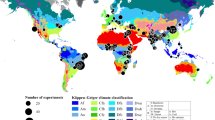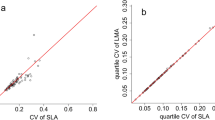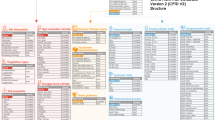Abstract
THE efficacy of the Latin-square design1 in eliminating two-dimensional variation from treatment comparisons, particularly in field experiments, has long been established. Kendall2 states that horizontal and vertical gradients at least are removed from the comparisons, implying, of course, that the three degrees of freedom for columns in a 4 × 4 Latin square, for example, can be regarded as eliminating linear, quadratic and cubic components in one direction. The mathematical model for the analysis can be regarded equivalently as representing the background of the experimental material against which the experiment is conducted as a curved sheet, the curvatures in vertical planes parallel to the columns (rows) being equal for plots in one row (column). In some situations, however, the changes in the experimental material may be such that different curvatures are more realistic, and on the assumption that the more closely the imposed model represents the underlying phenomena, the greater the achievable accuracy, such alternatives merit consideration.
Similar content being viewed by others
Article PDF
References
Yates, F., Emp. J. Exp. Agric., 1, 235 (1933).
Kendall, M. G., “Theory of Statistics”, 2 (Griffin, 1946).
Author information
Authors and Affiliations
Rights and permissions
About this article
Cite this article
Cox, C. Latin-Square Designs with Individual Gradients in One Direction. Nature 177, 1092 (1956). https://doi.org/10.1038/1771092a0
Issue Date:
DOI: https://doi.org/10.1038/1771092a0
Comments
By submitting a comment you agree to abide by our Terms and Community Guidelines. If you find something abusive or that does not comply with our terms or guidelines please flag it as inappropriate.



